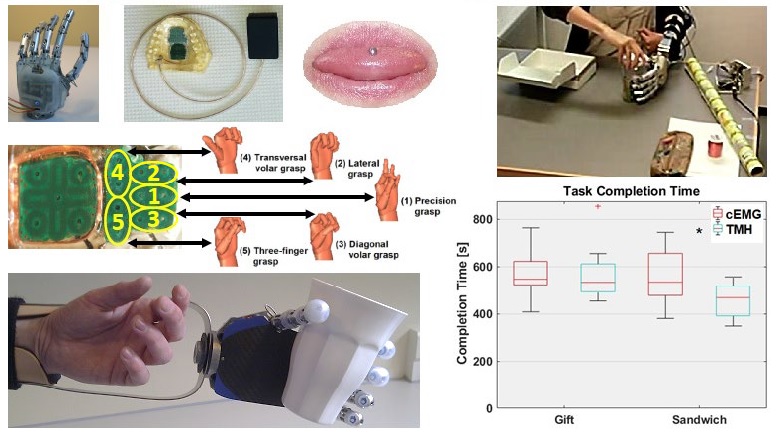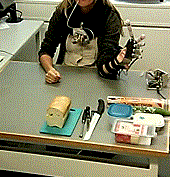
Inefficient control is the current bottleneck in achieving an increased clinical impact with dexterous myoelectric hand prostheses. The users demand systems that can effectively perform different grasping actions and manipulation tasks to enable the execution of the Activities of Daily Living (ADL). To address this challenge, a hybrid control scheme that combines tongue and myoelectric interfaces (TMH) has been developed. The TMH allows direct activation of grasps using a tongue interface, and proportional control of hand opening and closing using two EMG signals. The tongue interface is a wired version of the Inductive Tongue Control System (ITCS) suitable for research applications. This system included a mouthpiece unit, a ferromagnetic activation unit and an external unit, and provided the functionality of a wireless keyboard.
In the present work, the effectiveness of the TMH was evaluated using a standard clinical test, and the performance was compared to that achieved using conventional EMG control (cEMG). The assessment was conducted in 10 able-bodied subjects that used SmartHand to perform two functional tasks: “Gift-wrapping” and “Sandwich-making” defined by the Assisting Hand Assessment for adults with upper limb Prosthesis, Amputations and Deficiencies (AHA-PAD). The tests focuses on the completion of the ADL tasks characterised by bimanual activities, which are particularly challenging for prostheses users. The inclusion of bimanual activities in the AHA test is especially important because these are rarely considered in prosthesis assessment, despite being common and important for accomplishing daily life tasks.
When using TMH, the subjects were significantly faster than cEMG in the sandwich making task (p=0.024). The task completion time was reduced by 108 seconds, corresponding to 19% improvement when using the TMH compared to cEMG. Thus, the TMH control scheme could be an attractive alternative for providing enhanced control of multifunctional prosthetic hands.

